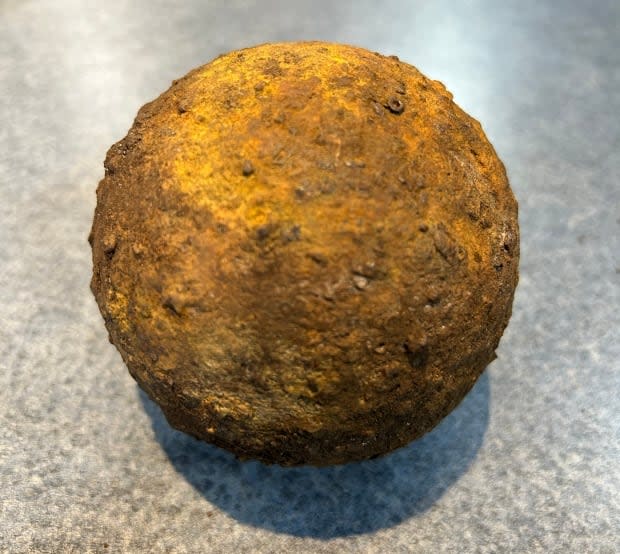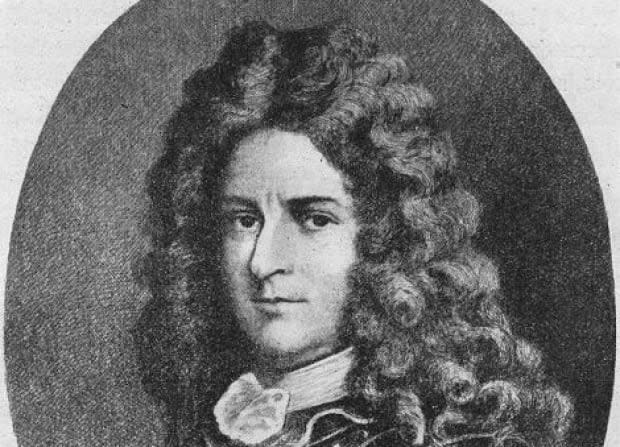This N.L. couple went for a walk with their dog — and returned with a centuries-old cannonball


Bernard Martin and Shelley Bryant were walking their dog, Brigus, in Petty Harbour when they came across what they thought was coyote poop. Turns out it's a lot more interesting — and more historically significant — than that.
The couple came across the finding at Graveyard Ridge between Petty Harbour and Maddox Cove around the east side of Miner's Pond. Martin said he was surprised when he got down for a closer look.
"Lo and behold right next to it, like inches away, was a round thing. Perfectly round," Martin told CBC Radio's On The Go Thursday. "I immediately thought 'that looks like a cannonball."
And indeed it was.
The ball is about six centimetres in diameter, Martin said, is about the size of a softball and weighs more than 2.5 kilograms.
Bryant says she wasn't immediately sold on it being a cannonball, as the majority of the ball was underneath the surface.

"It looked like this kind of rusty-coloured, perfectly round mushroom," she said with a laugh. "I even moved it with my foot and it shifted like a mushroom."
Martin began researching what could have brought the cannonball to Petty Harbour and came across the stories of Pierre Le Moyne d'Iberville.
According to The Rooms, d'Iberville was a French soldier, explorer and colonial administrator who lead an assault across parts of Newfoundland in the late 1600s.
d'Iberville attacked and captured Petty Harbour in 1696, along with Bay Bulls. The Frenchman went on to besiege St. John's, burned houses in the city and had a prisoner scalped in a successful effort to force surrender from the English.

"It's fun to think of it as possibly being that old," Bryant said.
"Apparently there would have been some manoeuvres and kind of exercises they would have done and possibly the cannonball might have come from that. But we don't think this would have been shot from the water, it's too far inland and it's up over a rather large hill. So it had to have been taken there."
Martin believes the cannonball could have been dropped on the trail during a journey from Petty Harbour to St. John's as the trail they were on leads from Petty Harbour to the Waterford Valley area of St. John's.
He also learned it wasn't the first item it's believed d'Iberville left in the St. John's area.
"The story goes that when d'Iberville crossed through [Shea Heights], they lost a cannon through the ice in one of these gullies," he said.
"[I've] got to go looking for a cannon in a gully now."


